Marzieh Najafi
Optical IRSs: Power Scaling Law, Optimal Deployment, and Comparison with Relays
Mar 17, 2023Abstract:The line-of-sight (LOS) requirement of free-space optical (FSO) systems can be relaxed by employing optical relays or optical intelligent reflecting surfaces (IRSs). In this paper, we show that the power reflected from FSO IRSs and collected at the receiver (Rx) lens may scale quadratically or linearly with the IRS size or may saturate at a constant value. We analyze the power scaling law for optical IRSs and unveil its dependence on the wavelength, transmitter (Tx)-to-IRS and IRS-to-Rx distances, beam waist, and Rx lens size. We also consider the impact of linear, quadratic, and focusing phase shift profiles across the IRS on the power collected at the Rx lens for different IRS sizes. Our results reveal that surprisingly the powers received for the different phase shift profiles are identical, unless the IRS operates in the saturation regime. Moreover, IRSs employing the focusing (linear) phase shift profile require the largest (smallest) size to reach the saturation regime. We also compare optical IRSs in different power scaling regimes with optical relays in terms of the outage probability, diversity and coding gains, and optimal placement. Our results show that, at the expense of a higher hardware complexity, relay-assisted FSO links yield a better outage performance at high signal-to-noise-ratios (SNRs), but optical IRSs can achieve a higher performance at low SNRs. Moreover, while it is optimal to place relays equidistant from Tx and Rx, the optimal location of optical IRSs depends on the phase shift profile and the power scaling regime they operate in.
Power Scaling Law for Optical IRSs and Comparison with Optical Relays
May 05, 2022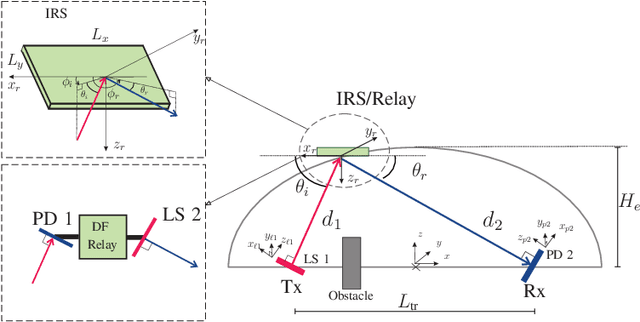
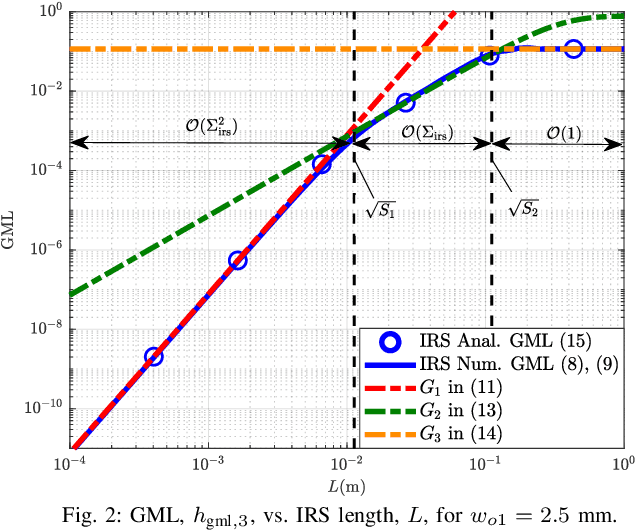
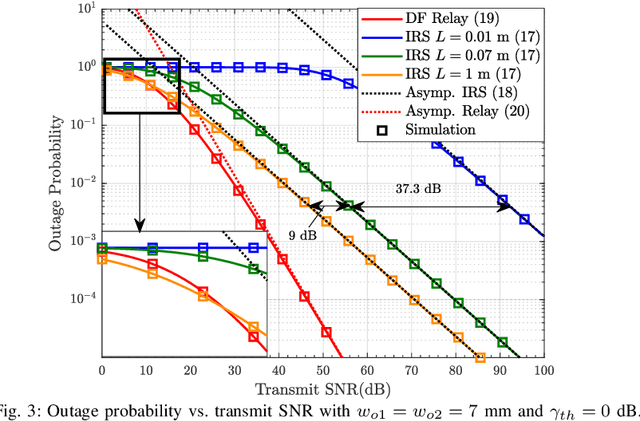
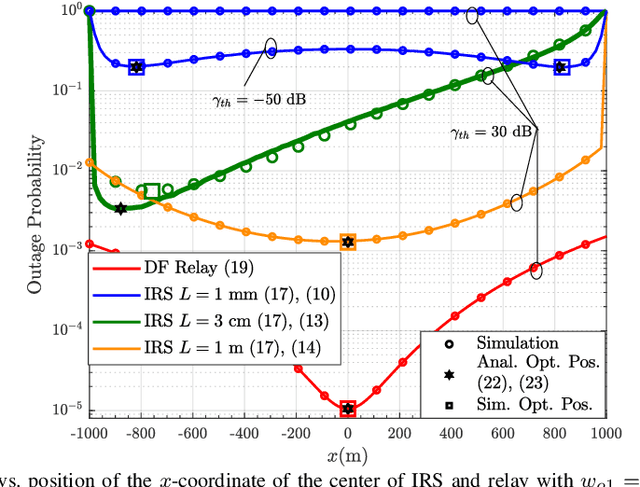
Abstract:The line-of-sight (LOS) requirement of free-space optical (FSO) systems can be relaxed by employing optical relays and optical intelligent reflecting surfaces (IRSs). Unlike radio frequency (RF) IRSs, which typically exhibit a quadratic power scaling law, the power reflected from FSO IRSs and collected at the receiver lens may scale quadratically or linearly with the IRS size or may even saturate at a constant value. We analyze the power scaling law for optical IRSs and unveil its dependence on the wavelength, transmitter (Tx)-to-IRS and IRS-to-receiver (Rx) distances, beam waist, and lens size. We compare optical IRSs in different power scaling regimes with optical relays in terms of the outage probability, diversity and coding gains, and optimal placement. Our results show that, at the expense of a higher hardware complexity, relay-assisted FSO links yield a better outage performance at high signal-to-noise-ratios (SNRs), but optical IRSs can achieve a higher performance at low SNRs. Moreover, while it is optimal to place relays equidistant from Tx and Rx, the optimal location of IRSs depends on the power scaling regime they operate in.
Modeling and Design of IRS-Assisted Multi-Link FSO Systems
Jul 31, 2021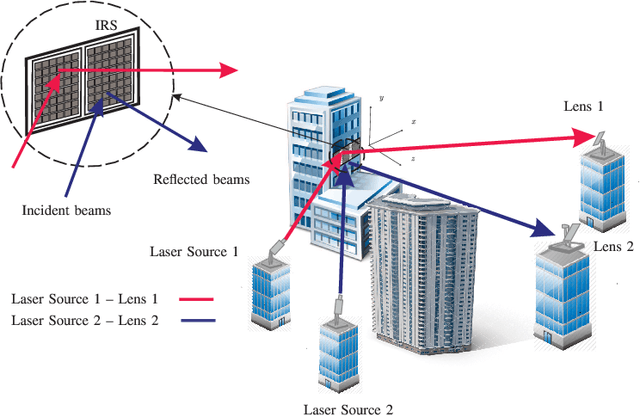
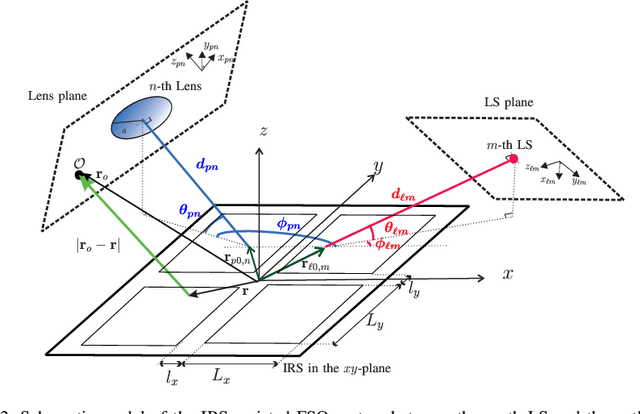

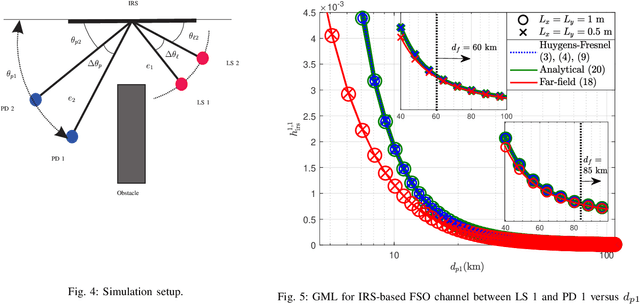
Abstract:In this paper, we investigate the modeling and design of intelligent reflecting surface (IRS)-assisted optical communication systems which are deployed to relax the line-of-sight (LOS) requirement in multi-link free space optical (FSO) systems. The FSO laser beams incident on the optical IRSs have a Gaussian power intensity profile and a nonlinear phase profile, whereas the plane waves in radio frequency (RF) systems have a uniform power intensity profile and a linear phase profile. Given these substantial differences, the results available for IRS-assisted RF systems are not applicable to IRS-assisted FSO systems. Therefore, we develop a new analytical channel model for point-to-point IRS-assisted FSO systems based on the Huygens-Fresnel principle. Our analytical model captures the impact of the size, position, and orientation of the IRS as well as its phase shift profile on the end-to-end channel. To allow the sharing of the optical IRS by multiple FSO links, we propose three different protocols, namely the time division (TD), IRS-division (IRSD), and IRS homogenization (IRSH) protocols. The proposed protocols address the specific characteristics of FSO systems including the non-uniformity and possible misalignment of the laser beams. Furthermore, to compare the proposed IRS sharing protocols, we analyze the bit error rate (BER) and the outage probability of IRS-assisted multi-link FSO systems in the presence of inter-link interference. Our simulation results validate the accuracy of the proposed analytical channel model for IRS-assisted FSO systems and confirm that this model is applicable for both large and intermediate IRS-receiver lens distances. Moreover, in the absence of misalignment errors, the IRSD protocol outperforms the other protocols, whereas in the presence of misalignment errors, the IRSH protocol performs significantly better than the IRSD protocol.
Intelligent Reflecting Surface-assisted Free-space Optical Communications
May 13, 2021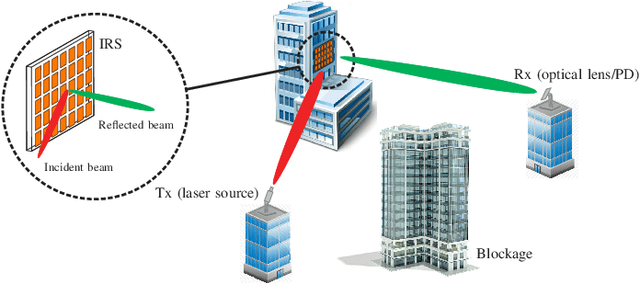
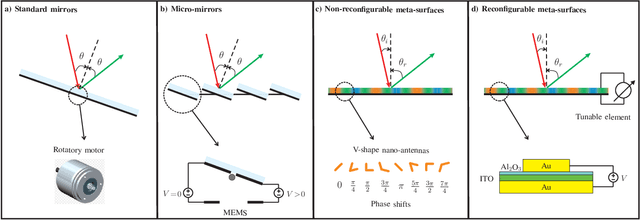
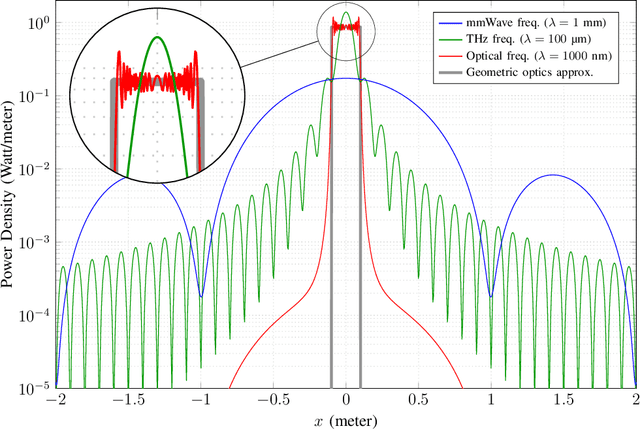
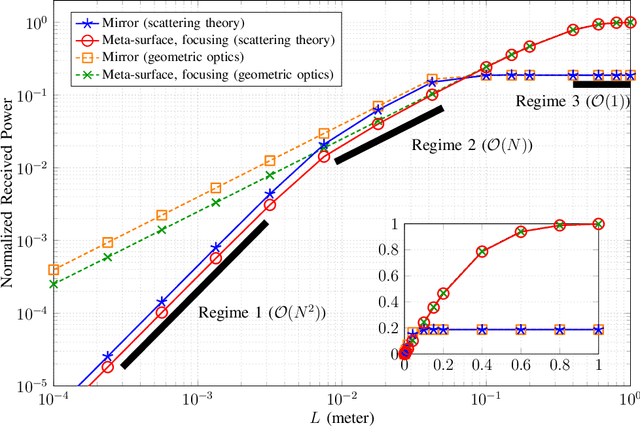
Abstract:Free-space optical (FSO) systems are able to offer the high data-rate, secure, and cost-efficient communication links required for applications such as wireless front- and backhauling for 5G and 6G communication networks. Despite the substantial advancement of FSO systems over the past decades, the requirement of a line-of-sight connection between transmitter and receiver remains a key limiting factor for their deployment. In this paper, we discuss the potential role of intelligent reflecting surfaces (IRSs) as a solution to relax this requirement. We present an overview of existing optical IRS technologies; compare optical IRSs with radio-frequency IRSs and optical relays; and identify various open problems for future research on IRS-assisted FSO communications.
 Add to Chrome
Add to Chrome Add to Firefox
Add to Firefox Add to Edge
Add to Edge